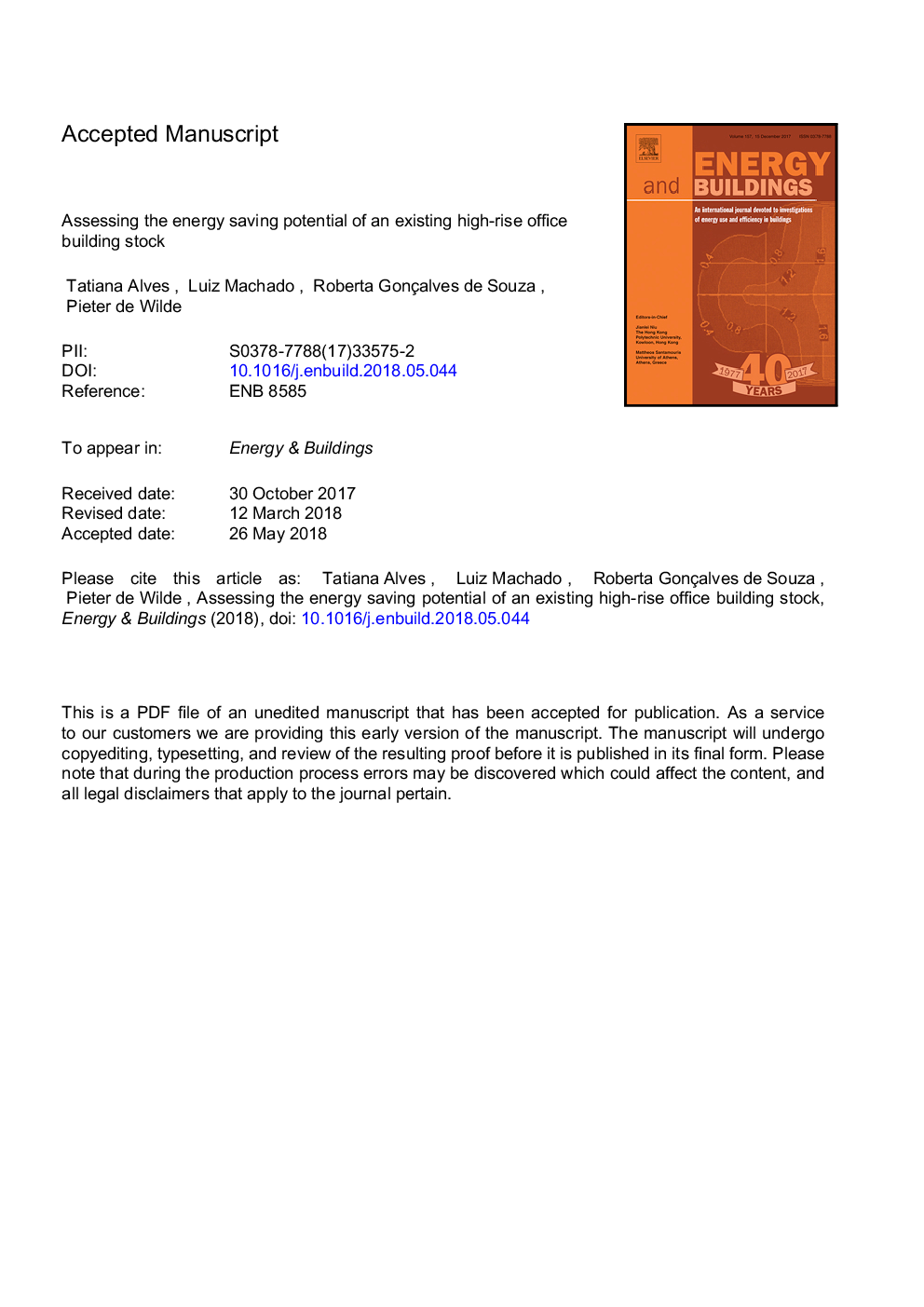| Article ID | Journal | Published Year | Pages | File Type |
|---|---|---|---|---|
| 6727656 | Energy and Buildings | 2018 | 26 Pages |
Abstract
In underdeveloped countries, the lack of building energy consumption data makes it hard to decide upon interventions in the existing building stock. In order to overcome this difficulty this study develops a comprehensive framework to identify and analyse the energy saving potential of an existing building stock category. The methodology consists of six basic steps: a process for defining reference buildings, dynamic archetype model simulations, an energy consumption baseline estimation, energy retrofit measures selection and a cost optimal pathway analysis, development of energy saving scenarios and estimation of building stock energy savings potential. In order to apply the proposed methodology, a case study of the high-rise office building stock took place in the city of Belo Horizonte, Brazil. The energy consumption projection results for the next 20 years show that there are significant opportunities for energy efficiency improvements. Cost effective energy savings of up to 24% would be possible in the high-rise office building stock. Overall, energy saving scenario projections emphasize the urgency of dealing with the existing high-rise office building stock but also highlight that to reduce the energy consumption of the current building stock the policy makers should pay close attention to the new buildings.
Related Topics
Physical Sciences and Engineering
Energy
Renewable Energy, Sustainability and the Environment
Authors
Tatiana Alves, Luiz Machado, Roberta Gonçalves de Souza, Pieter de Wilde,
